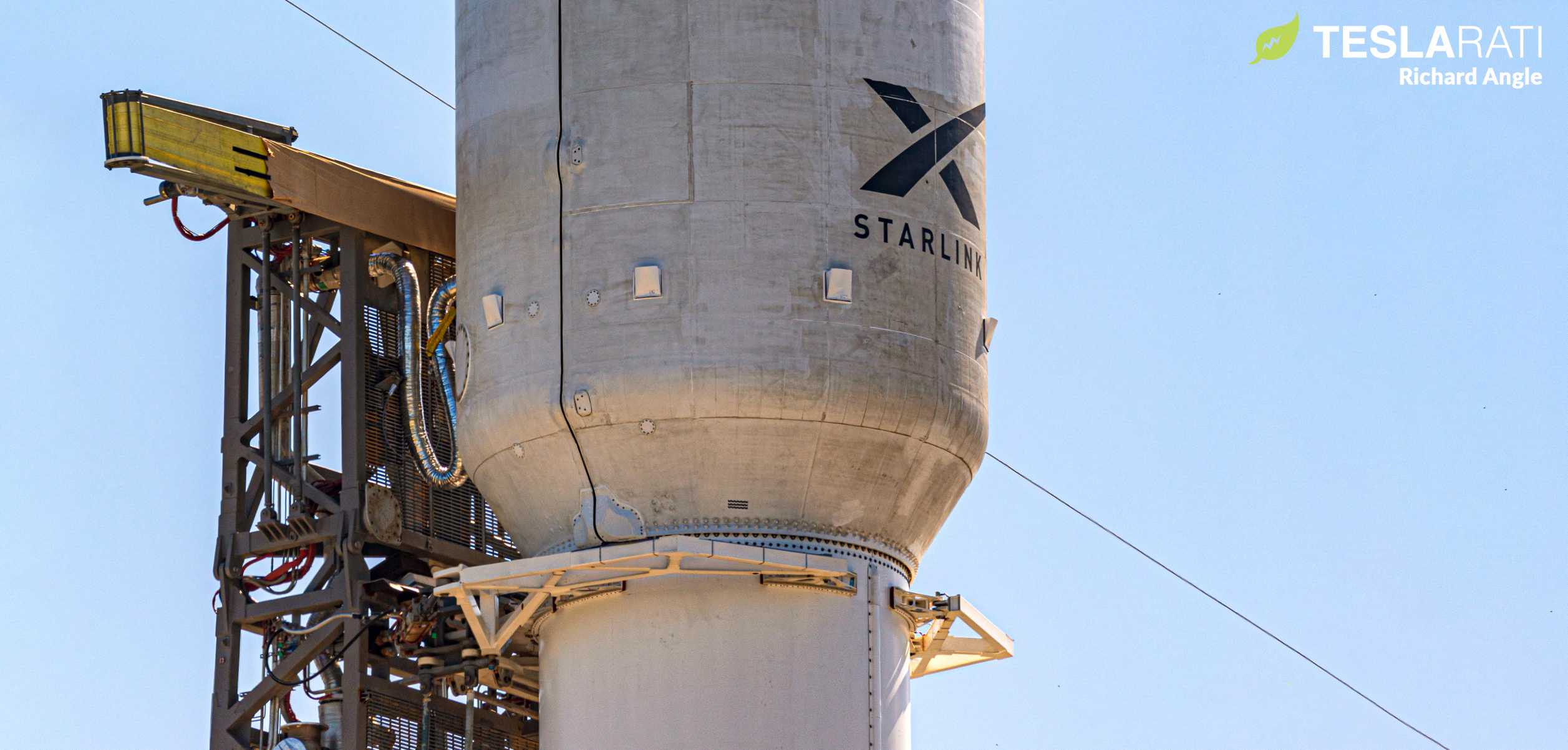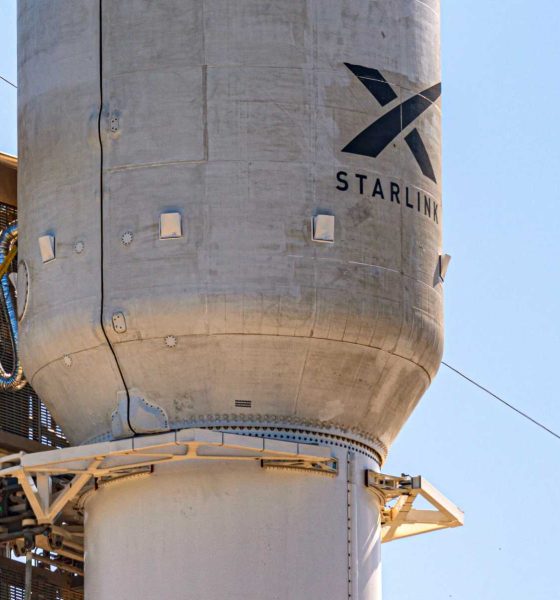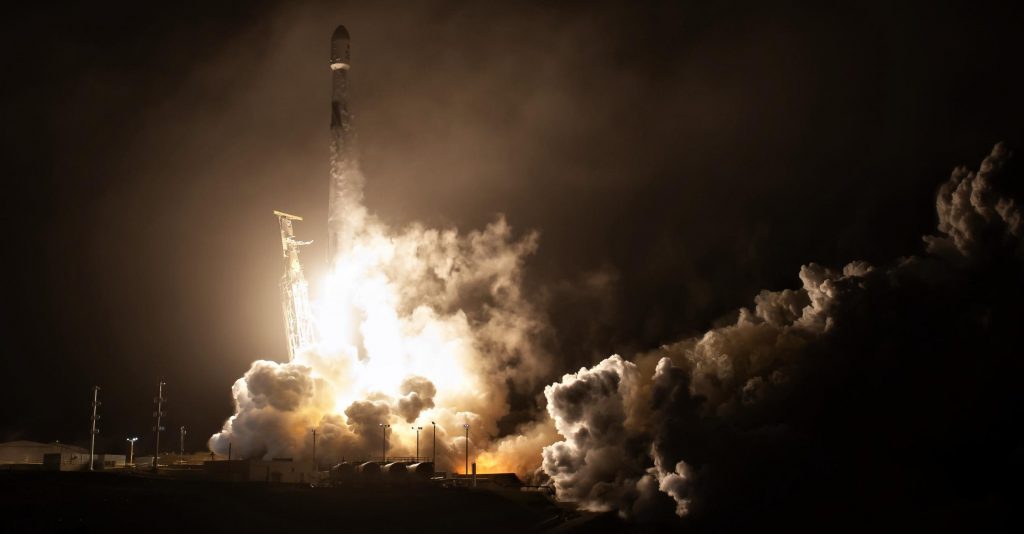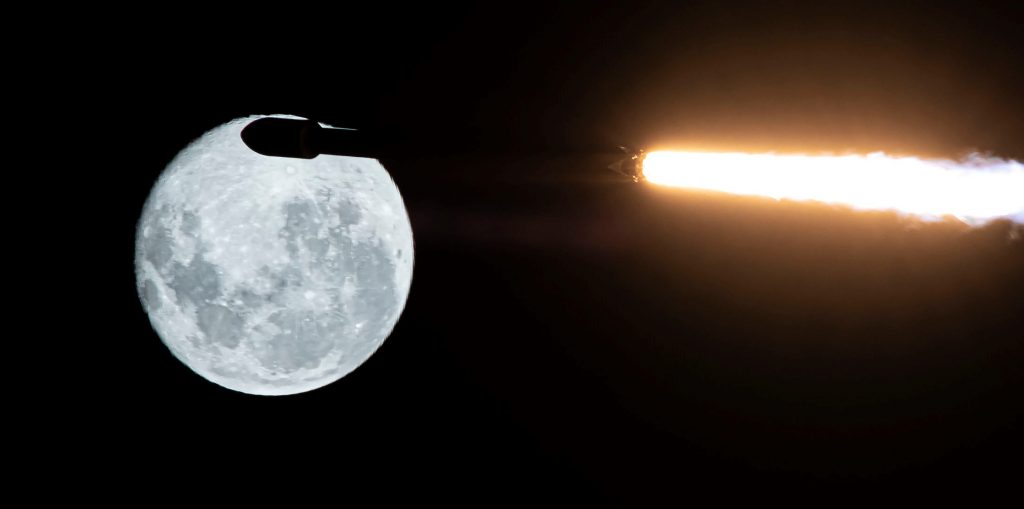

News
SpaceX set for third Starlink launch in a row [webcast]
Update: SpaceX says that a Falcon 9 rocket is on track Starlink 4-11 from California’s Vandenberg Space Force Base (VSFB) no earlier than (NET) 9:12 am PST (17:12 UTC) on Friday, February 25th. The mission will be the third of five back-to-back Starlink launches planned in February and March 2022.
In lieu of commercial missions that are ready to fly, SpaceX Falcon 9 rockets are currently scheduled to launch at least five batches of Starlink satellites in a row.
The streak won’t break the company’s record of seven back-to-back Starlink launches but it does highlight one beneficial side-effect of SpaceX’s relentless pursuit of vertical integration – the ability to create its own launch demand. Just shy of two full months into 2022, SpaceX has launched seven times – three for paying customers and four for Starlink. Before February is over, the company is scheduled to launch at least one more batch of Starlink satellites for a total of eight launches in the first two months of the year.
Up next, SpaceX is scheduled to launch Starlink 4-11 out of its California-based Vandenberg Space Force Base (VSFB) SLC-4E facilities no earlier than (NET) 9:08 am PST (17:08 UTC), Friday, February 25th. Drone ship Of Course I Still Love You (OCISLY) departed the Port of Long Beach for the mission on February 22nd and is headed around 640 kilometers (~400 mi) southeast to a booster landing area just off the coast of Baja California. Falcon 9 booster B1063 is scheduled to support the mission – its fourth launch overall and first since it helped launch NASA’s DART asteroid redirection spacecraft into interplanetary space in November 2021.
Up next, another Falcon 9 rocket is scheduled to launch Starlink 4-9 as early as “mid-morning” EST on Thursday, March 3rd from its Kennedy Space Center LC-39A pad. Booster B1060 is reportedly scheduled to support the mission and will become the third SpaceX first stage to singlehandedly support eleven orbital-class launches if it does. Starlink 4-9 could be the pad’s last mission for a few weeks to give SpaceX enough time to convert its rocket transporter/erector for the March 30th launch of Axiom-1, which will send four private astronauts to the International Space Station.
Finally, SpaceX plans to launch Starlink 4-10 NET Tuesday, March 8th from Cape Canaveral Space Force Station (CCSFS) Launch Complex 40 (LC-40). It’s likely that SpaceX will launch at least one more Starlink mission next month but a firm date has yet to be settled on. All told, including Starlink 4-7 (February 3rd) and Starlink 4-8 (February 21st), SpaceX is on track to launch at least five Starlink missions in a row, hopefully placing around 240 satellites (~200 after losing most of Starlink 4-7 to a “geomagnetic storm”) in orbit in less than five weeks.


More a sign of a lack of commercial missions ready for flight than anything else, SpaceX’s record for uninterrupted Starlink missions – set from February to April 2021 – is seven launches. Technically, SpaceX actually managed 12 Starlink launches between February and March, with just one commercial mission – Crew-2 – separating the lot. Barring surprises, SpaceX is thankfully unlikely to be hit by a similar streak in 2022.
There’s a chance that SpaceX will launch a batch of three O3B mPower satellites for SES next month. At a minimum, SpaceX is scheduled to launch a trio of Dragon missions over the next two or so months, beginning with Ax-1 NET March 30th. Another Crew Dragon is scheduled to launch Crew-4 for NASA on April 15th, followed by Cargo Dragon 2’s CRS-25 space station resupply mission as early as May 1st. Excluding Starlink missions and on top of the three commercial launches SpaceX has already completed this year, there are as many as 38 more commercial Falcon launches tentatively scheduled before the end of 2022.

Elon Musk
Elon Musk and Tesla AI Director share insights after empty driver seat Robotaxi rides
The executives’ unoccupied tests hint at the rapid progress of Tesla’s unsupervised Robotaxi efforts.

Tesla CEO Elon Musk and AI Director Ashok Elluswamy celebrated Christmas Eve by sharing personal experiences with Robotaxi vehicles that had no safety monitor or occupant in the driver’s seat. Musk described the system’s “perfect driving” around Austin, while Elluswamy posted video from the back seat, calling it “an amazing experience.”
The executives’ unoccupied tests hint at the rapid progress of Tesla’s unsupervised Robotaxi efforts.
Elon and Ashok’s firsthand Robotaxi insights
Prior to Musk and the Tesla AI Director’s posts, sightings of unmanned Teslas navigating public roads were widely shared on social media. One such vehicle was spotted in Austin, Texas, which Elon Musk acknowleged by stating that “Testing is underway with no occupants in the car.”
Based on his Christmas Eve post, Musk seemed to have tested an unmanned Tesla himself. “A Tesla with no safety monitor in the car and me sitting in the passenger seat took me all around Austin on Sunday with perfect driving,” Musk wrote in his post.
Elluswamy responded with a 2-minute video showing himself in the rear of an unmanned Tesla. The video featured the vehicle’s empty front seats, as well as its smooth handling through real-world traffic. He captioned his video with the words, “It’s an amazing experience!”
Towards Unsupervised operations
During an xAI Hackathon earlier this month, Elon Musk mentioned that Tesla owed be removing Safety Monitors from its Robotaxis in Austin in just three weeks. “Unsupervised is pretty much solved at this point. So there will be Tesla Robotaxis operating in Austin with no one in them. Not even anyone in the passenger seat in about three weeks,” he said. Musk echoed similar estimates at the 2025 Annual Shareholder Meeting and the Q3 2025 earnings call.
Considering the insights that were posted Musk and Elluswamy, it does appear that Tesla is working hard towards operating its Robotaxis with no safety monitors. This is quite impressive considering that the service was launched just earlier this year.
Elon Musk
Starlink passes 9 million active customers just weeks after hitting 8 million
The milestone highlights the accelerating growth of Starlink, which has now been adding over 20,000 new users per day.

SpaceX’s Starlink satellite internet service has continued its rapid global expansion, surpassing 9 million active customers just weeks after crossing the 8 million mark.
The milestone highlights the accelerating growth of Starlink, which has now been adding over 20,000 new users per day.
9 million customers
In a post on X, SpaceX stated that Starlink now serves over 9 million active users across 155 countries, territories, and markets. The company reached 8 million customers in early November, meaning it added roughly 1 million subscribers in under seven weeks, or about 21,275 new users on average per day.
“Starlink is connecting more than 9M active customers with high-speed internet across 155 countries, territories, and many other markets,” Starlink wrote in a post on its official X account. SpaceX President Gwynne Shotwell also celebrated the milestone on X. “A huge thank you to all of our customers and congrats to the Starlink team for such an incredible product,” she wrote.
That growth rate reflects both rising demand for broadband in underserved regions and Starlink’s expanding satellite constellation, which now includes more than 9,000 low-Earth-orbit satellites designed to deliver high-speed, low-latency internet worldwide.
Starlink’s momentum
Starlink’s momentum has been building up. SpaceX reported 4.6 million Starlink customers in December 2024, followed by 7 million by August 2025, and 8 million customers in November. Independent data also suggests Starlink usage is rising sharply, with Cloudflare reporting that global web traffic from Starlink users more than doubled in 2025, as noted in an Insider report.
Starlink’s momentum is increasingly tied to SpaceX’s broader financial outlook. Elon Musk has said the satellite network is “by far” the company’s largest revenue driver, and reports suggest SpaceX may be positioning itself for an initial public offering as soon as next year, with valuations estimated as high as $1.5 trillion. Musk has also suggested in the past that Starlink could have its own IPO in the future.
News
NVIDIA Director of Robotics: Tesla FSD v14 is the first AI to pass the “Physical Turing Test”
After testing FSD v14, Fan stated that his experience with FSD felt magical at first, but it soon started to feel like a routine.

NVIDIA Director of Robotics Jim Fan has praised Tesla’s Full Self-Driving (Supervised) v14 as the first AI to pass what he described as a “Physical Turing Test.”
After testing FSD v14, Fan stated that his experience with FSD felt magical at first, but it soon started to feel like a routine. And just like smartphones today, removing it now would “actively hurt.”
Jim Fan’s hands-on FSD v14 impressions
Fan, a leading researcher in embodied AI who is currently solving Physical AI at NVIDIA and spearheading the company’s Project GR00T initiative, noted that he actually was late to the Tesla game. He was, however, one of the first to try out FSD v14.
“I was very late to own a Tesla but among the earliest to try out FSD v14. It’s perhaps the first time I experience an AI that passes the Physical Turing Test: after a long day at work, you press a button, lay back, and couldn’t tell if a neural net or a human drove you home,” Fan wrote in a post on X.
Fan added: “Despite knowing exactly how robot learning works, I still find it magical watching the steering wheel turn by itself. First it feels surreal, next it becomes routine. Then, like the smartphone, taking it away actively hurts. This is how humanity gets rewired and glued to god-like technologies.”
The Physical Turing Test
The original Turing Test was conceived by Alan Turing in 1950, and it was aimed at determining if a machine could exhibit behavior that is equivalent to or indistinguishable from a human. By focusing on text-based conversations, the original Turing Test set a high bar for natural language processing and machine learning.
This test has been passed by today’s large language models. However, the capability to converse in a humanlike manner is a completely different challenge from performing real-world problem-solving or physical interactions. Thus, Fan introduced the Physical Turing Test, which challenges AI systems to demonstrate intelligence through physical actions.
Based on Fan’s comments, Tesla has demonstrated these intelligent physical actions with FSD v14. Elon Musk agreed with the NVIDIA executive, stating in a post on X that with FSD v14, “you can sense the sentience maturing.” Musk also praised Tesla AI, calling it the best “real-world AI” today.








